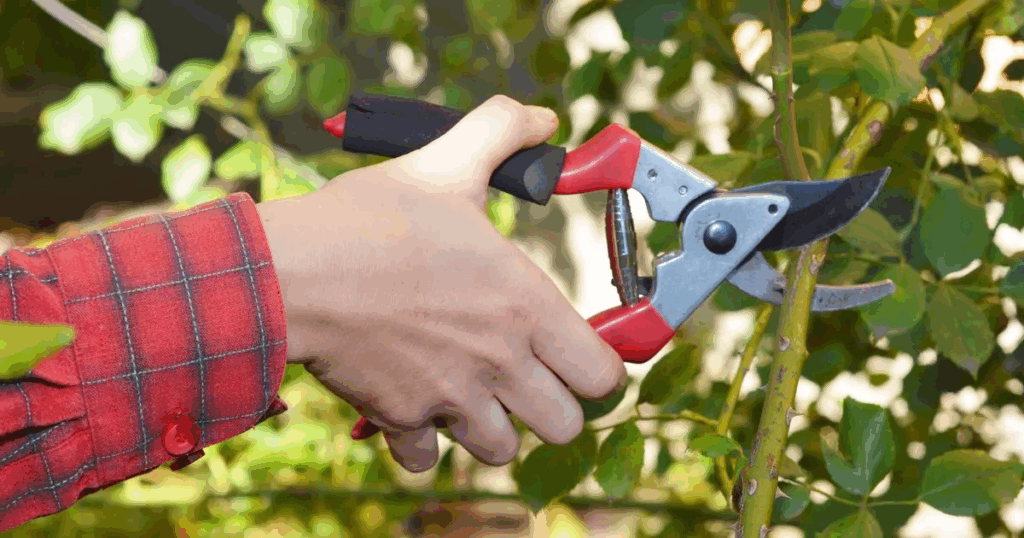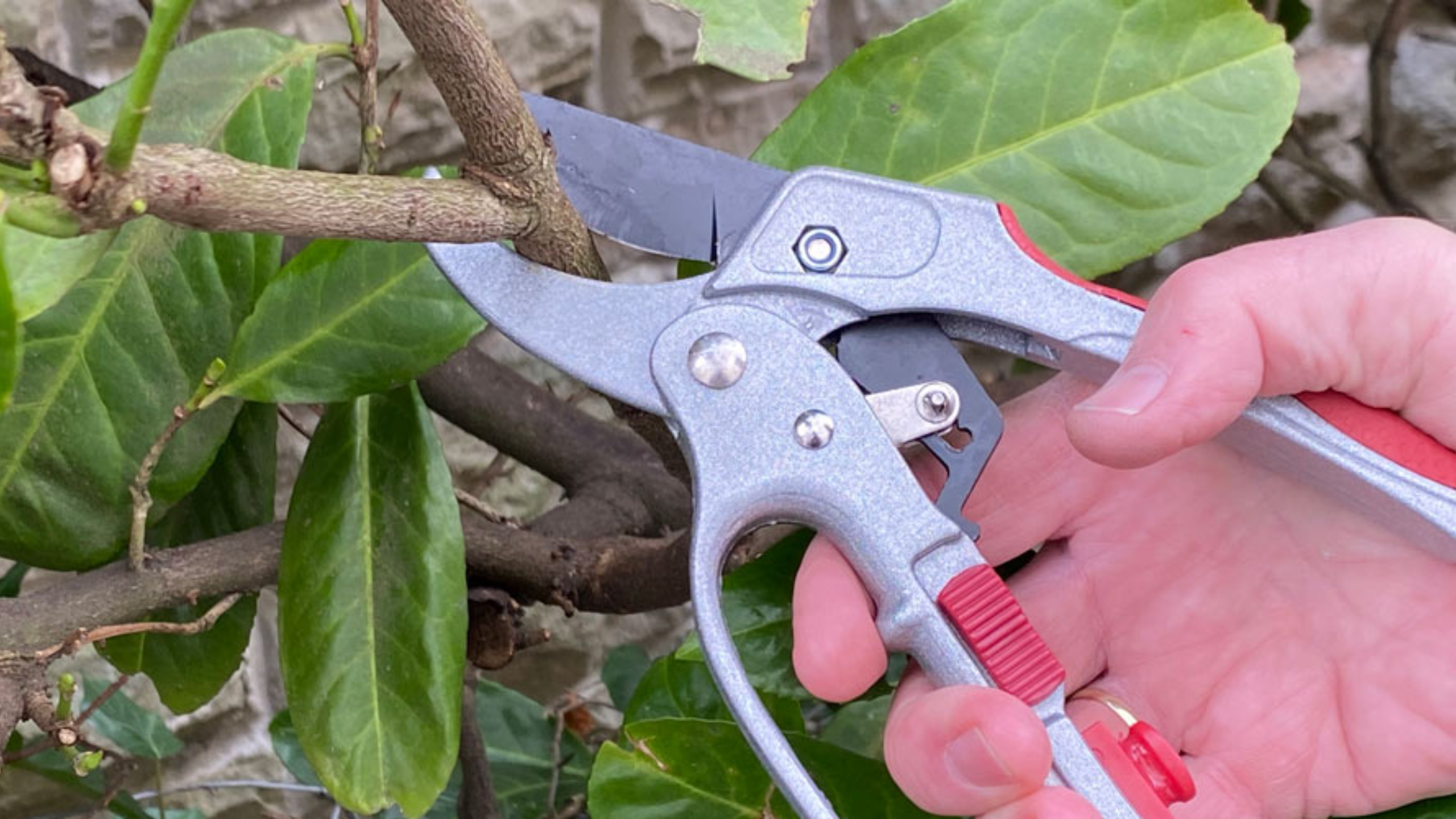Pruning your plants regularly is key to fostering healthier growth, encouraging more vibrant blooms, and even boosting fruit production. But knowing when and how to prune can be tricky, especially if you’re not sure which plants to tackle in each season. This easy-to-follow guide will help you stay on top of your pruning tasks all year long, so you can enjoy a flourishing garden.
Essential Pruning Tools You’ll Need
Before you start pruning, it’s important to have the right tools to get the job done efficiently. Here’s what you’ll need:
- Sharp Pruning Shears: Ideal for most pruning tasks. Sharp blades make clean cuts, promoting better healing and minimizing stress on the plant.
- A Small Pruning Saw: For thicker branches that your shears can’t handle. A saw gives you more power for cutting through tougher wood.
- Clean and Disinfected Tools: Always clean your tools before and after use. This prevents the spread of diseases between plants.
Taking good care of your tools not only ensures they work well but also helps protect the health of your plants.
Monthly Pruning Schedule: When to Prune for Best Results
Each month brings a new set of pruning tasks to tackle. Here’s a detailed look at what to prune throughout the year:

January:
In January, focus on winter-blooming trees like almonds and plums. Pruning these trees during their dormant period helps improve their shape and encourages healthier blooms in the coming season.
February:
Now’s the time to give some attention to early-flowering shrubs and climbing plants. Pruning these plants encourages new growth, so they bloom beautifully when the weather warms up. It’s also a good time for cutting back overgrown vines.
March:
In regions with mild winters, finish up your winter pruning tasks. For colder climates, continue pruning the plants you worked on in February. This month is all about tidying up before spring kicks in.
April:
April is a month where it’s best to avoid pruning altogether. Sap flow is at its peak during this time, and pruning could stress your plants. Let them be, and save your energy for upcoming tasks.
May:
May brings warmer weather, and it’s a great time to remove any suckers or water sprouts growing at the base of fruit trees or inside their canopies. Removing these unwanted growths helps direct energy into the fruit-bearing parts of the tree.
June:
In June, it’s time for some light trimming. Focus on hedges and flowering shrubs, shaping them to maintain a neat appearance. Avoid heavy pruning at this stage, as it can disturb the plant’s natural growth pattern.
July & August:
Summer pruning comes into play during these hot months, particularly for stone fruit trees like plums, apricots, and cherries. Summer pruning helps balance the tree’s fruit production with its overall growth, ensuring that the tree’s energy is evenly distributed.
September:
By September, it’s time to thin out dense growth in your plants. Doing so will improve air circulation and allow more sunlight to reach the inner parts of the plant, reducing the risk of fungal diseases and promoting overall plant health.
October to December:
As the year winds down, limit your pruning to light maintenance tasks. Focus on tidying up hedges and trimming any overgrown vegetable garden plants. Heavy pruning should be reserved for earlier months.
Types of Pruning: Choosing the Right Technique
There’s more to pruning than just cutting branches. Different types of pruning serve different purposes, so understanding when to use each one will help you achieve the best results.
- Structural Pruning: This type of pruning is typically done on young plants. It shapes their growth early on, helping them grow into a strong and attractive form.
- Maintenance Pruning: This is your regular upkeep for plants. It involves removing dead, diseased, or crossing branches to keep the plant healthy and looking tidy.
- Thinning: Thinning is exactly what it sounds like—it’s all about opening up the plant structure. By selectively removing branches, you increase airflow and allow light to penetrate deeper into the plant.
- Rejuvenation Pruning: As plants age, they sometimes need a bit of a refresh. Rejuvenation pruning helps renew tired, overgrown plants by cutting them back more heavily, encouraging fresh, vigorous growth.
Timing Your Pruning by Plant Type
One of the most common questions gardeners have is when to prune specific plants. Here’s a general guideline for when to tackle pruning based on the plant type:
- Deciduous Plants: These plants lose their leaves in winter, making it the best time to prune them. They’re dormant during this period, so pruning won’t cause unnecessary stress. Plan your pruning in late winter or early spring before new growth begins.
- Evergreen Plants: Evergreens retain their leaves year-round, so they should be pruned in spring. This timing ensures that you’re cutting away dead or damaged growth without affecting the plant’s overall vitality.
Conclusion: Pruning for a Thriving Garden
Regular pruning is an essential part of plant care, and by following this monthly guide, you can keep your plants healthy, beautiful, and productive throughout the year. With the right tools, timing, and pruning techniques, you’ll be able to shape your garden into the lush paradise you’ve always wanted.


amoxicillin where to buy – combamoxi.com buy amoxicillin generic
fluconazole 100mg uk – on this site buy diflucan 200mg online
cenforce where to buy – fast cenforce rs cenforce 100mg sale
cialis from canada – https://ciltadgn.com/# cialis india
how long does it take for cialis to start working – cialis package insert cialis for sale brand
ranitidine 300mg usa – https://aranitidine.com/ where to buy zantac without a prescription
50 or 100mg viagra – https://strongvpls.com/# sildenafil genfar 50mg
More posts like this would force the blogosphere more useful. https://buyfastonl.com/
Proof blog you procure here.. It’s hard to assign strong worth script like yours these days. I really appreciate individuals like you! Go through mindfulness!! https://gnolvade.com/
More posts like this would create the online elbow-room more useful. https://ursxdol.com/get-metformin-pills/
This is the gentle of criticism I in fact appreciate. buy zestril sale
This is the kind of post I recoup helpful. https://aranitidine.com/fr/ivermectine-en-france/
More content pieces like this would make the web better. https://ondactone.com/spironolactone/
This is the kind of topic I get high on reading.
order flomax online cheap
More articles like this would remedy the blogosphere richer. http://web.symbol.rs/forum/member.php?action=profile&uid=1171359
order forxiga sale – https://janozin.com/ forxiga pill
purchase xenical online – https://asacostat.com/# order orlistat 120mg pill
I couldn’t hold back commenting. Adequately written! http://zqykj.cn/bbs/home.php?mod=space&uid=303364
You can protect yourself and your family nearby being cautious when buying prescription online. Some pharmacy websites manipulate legally and offer convenience, secretiveness, sell for savings and safeguards to purchasing medicines. buy in TerbinaPharmacy https://terbinafines.com/product/zithromax.html zithromax
I’ll certainly carry back to be familiar with more. cenforce gГ©nГ©rique
More posts like this would bring about the blogosphere more useful.
https://t.me/officials_pokerdom/3988
https://t.me/s/flagman_official_registration
https://t.me/s/official_pokerdom_pokerdom